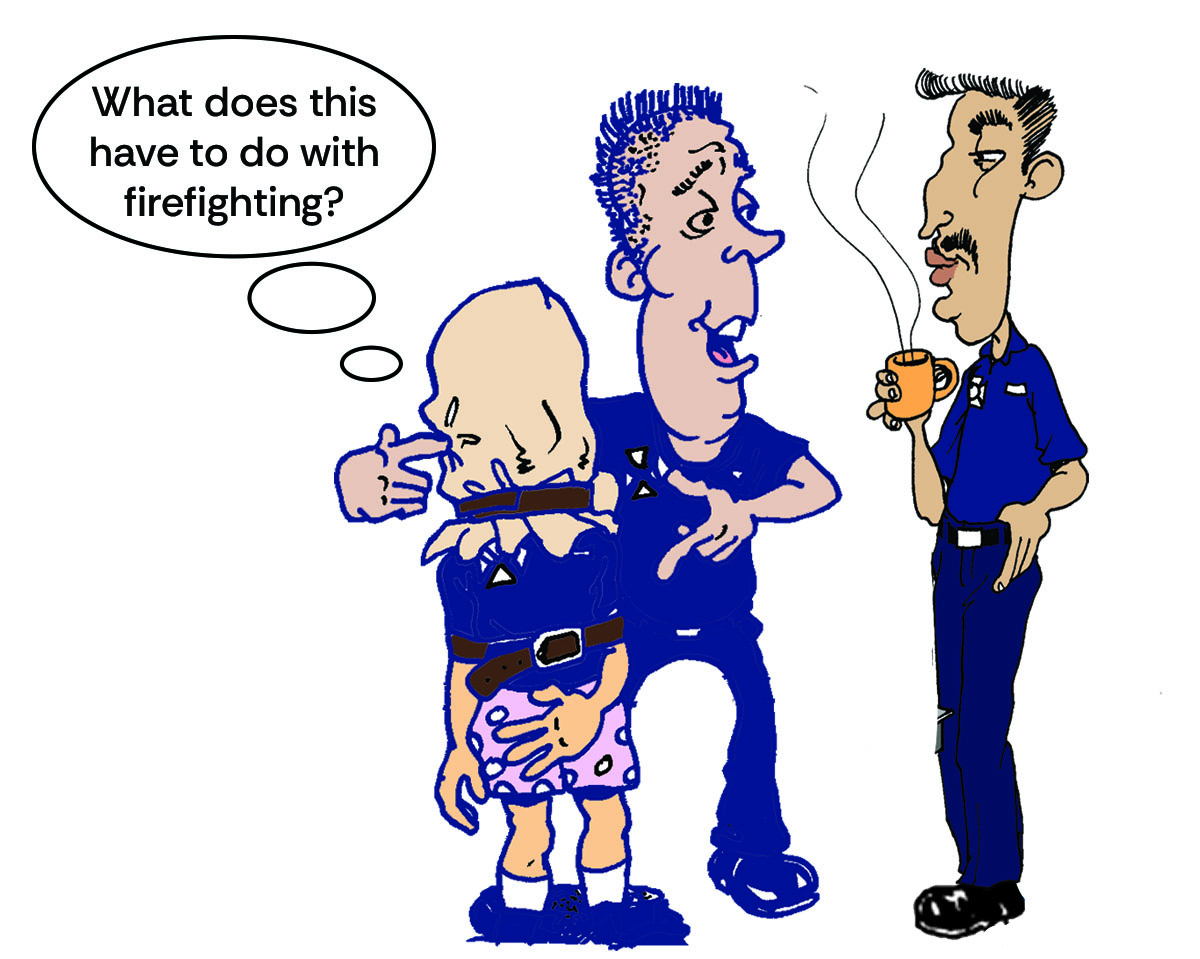Flying High on Seniority? Time on the job doesn’t make you better than anyone else, it just means you got hired first.
September 4, 2025Flying High on Seniority?
Time on the job doesn’t make you better than anyone else, it just means you got hired first.
By Terry Garrison
B Shifter Buckslip, Sept. 16, 2025.
Over the years, I have done a great deal of flying on Southwest Airlines. If you are familiar with Southwest, you will know they do not assign seats. Instead, the airline uses a group system that allows passengers to board the plane based on their group and number. Once on the plane, a passenger can pick any seat they wish. They receive their assigned group (A, B or C) and number (1–60+) based on when they officially checked in for their flight, which opens 24 hours before departure. The most experienced flyers check in as soon as possible—this includes my wife and me. However, we still seem to get assigned seats in the high A or low B groups. The reason I’m telling you all of this is to say: People can be cruel, judgmental, selfish and downright mean based on their seat seniority.
The seat seniority hierarchy is formed the minute passengers start boarding the plane and selecting their seats. Those who arrive early select what they think is the best seat location and, in many cases, they will save the seat next to them for later-arriving family or friends. I have witnessed many disagreements over those unauthorized saves. And not only do the A-groupers save seats, but they act entitled and look at anyone who enters the plane after them as less than them. Their disgust is palpable. Down the line, the B-groupers act more entitled than the C-groupers. As the plane fills, the later-boarding passengers are viewed with disdain, but only with sideways glances because you wouldn’t want to make eye contact, accidentally inviting someone to take the middle seat between you and your spouse. It becomes even worse if the B- and C-groupers are old, large or have children. How bad they must feel with everyone on the plane judging them or staring them down, daring them to sit next to them. Remember, all the C-groupers did was check in later—sometimes only minutes after—the A-groupers. (The good news is that Southwest is transitioning to an assigned-seat system because of all the arguments and personal battles. Thank goodness. You can read about it here.)
Fasten Your Ego to Avoid Fallout from Turbulence
The problems with Southwest’s current boarding system in many ways mirror the way some existing firefighters treat new members who come into their fire departments. These newcomers are only guilty of having less seniority. Don’t get me wrong, seniority is important. It should be used effectively in many organizational processes, such as station and vacation selection. But when seniority is used as a weapon to demean newer employees, it can become a slippery slope leading to serious employment issues like bullying, intimidation and unfair treatment.
I have heard of seat seniority in fire stations, with senior members claiming specific seats at the kitchen table or in the TV lounge. Come on, this is childish. The only place where there should be assigned seats is on the fire apparatus, where the seating position is directly related to job function. I recently had a retired fire captain tell me his battalion chief came to his station for dinner and had the nerve to sit in “his” chair. This captain was so proud of himself that he bragged about telling the BC to move. The fact that he shared this with me makes me believe it wasn’t an isolated incident and might be a symptom of flawed department culture. A captain should have their own desk and workplace because these things connect to the work, but a reserved seat at the kitchen table is unnecessary. Everyone knows who the captain is; it’s written on their shirt.

Claiming a specific chair in the kitchen or TV lounge isn’t a power move. It doesn’t say, “I’m in charge!” It says, “I am childish, and this chair makes me feel imortant!”
We Might All Start in Coach, But Anyone Can Upgrade to First Class
One of the greatest things about the fire service is that we have a single-level entry system. Every firefighter starts at the bottom and has the opportunity to promote as far up as they wish. Even Bruno was once a probationary firefighter. We should always remember that the people coming into our departments do so because they respect us and want to be part of our team. We should treat them with respect and do everything we can to help them succeed.
During my career, I have worked in five fire departments. In every one, there were a few people with seniority who felt privileged and treated members with less seniority poorly. No matter how hard we try, we will always have a few knuckleheads among us, but they should be an aberrancy, and we must manage them to improve their performance. The real problem occurs when the organization’s leaders allow unfair treatment or engage in it themselves. Unfortunately, sometimes the unfair treatment begins during the training academy and continues during probation.

Seniority isn’t a license to harass or mistreat new members. It’s an opportunity to guide, mentor, and support them so they can successfully acclimate to the organization.
The probationary period is very critical, and fire department leaders must stay connected to these new employees. I have heard of some departments assigning each probationary firefighter to a more senior firefighter who serves as a liaison and an active listener during this critical period. This is a great idea. Having someone for probationary firefighters to talk to is beneficial. Most probationary periods last at least a year; even longer in some departments. During that period, the probationary firefighter moves to different fire stations to experience different apparatus and crews. Having a consistent mentor during this time is helpful in many ways. They act as an informal tour guide, sharing perspectives and answering questions about everything from departmental culture to specific task-level activities. Although it was many years ago, I can still recall the senior firefighter who took me under his wing (and even shared each of the training captains’ pet peeves). It may seem like a small thing, but having a heads-up about the crew (family) you are about to be adopted into can really help. It is not an absolute, but partnering probationary firefighters with a senior firefighter who may be the same gender or race gives the newbie someone they can relate to during the stressful probationary period.
We’re All on the Same Flight with the Same Destination
When you inquire into these organizations with cultural issues, they will tell you the negative treatment is only temporary; once the firefighter survives the probationary period, they will be treated fairly. What a lousy excuse. Allowing this behavior creates a pattern that will continue for many generations. It may not cost the department in the present, but it will eventually pay a price. As leaders, we must ensure everyone is supported and treated fairly, including senior and new members, staff, and support personnel. After all, we are part of the same team and are all flying in the same plane, so to speak.
Which reminds me…my wife and I just returned from an Alaskan vacation. While flying on West Jet Airlines, we were fortunate enough to get the bulkhead seats in first class, seats 1A and 1C. I don’t get to fly first class very often—and I have never gotten the first two seats—so I made sure to board the plane before everyone else and gave the passengers who boarded after me the stink eye. After all, I got there first.

In 2007, Terry Garrison retired from the Phoenix Fire Department after serving more than 30 years. Working for Alan Brunacini and reaching the rank of assistant chief of operations helped shape Terry’s consistent values: firefighter safety and customer service. After a quick retirement, Terry served as the fire chief of the Oceanside (Calif.) Fire Department for almost three years. He then served as the chief of the Houston Fire Department for more than five years. Terry eventually moved back to where he was raised and served as the fire chief for the Glendale (Ariz.) Fire Department for more than six years before officially retiring from government service. Including his two years in the U.S. Army, Terry has worked for the government and worn a nametag and a helmet for over 47 years. (Thank goodness for helmets.) In addition, he has traveled throughout the world teaching Fire Command, utilizing his master’s degree in education. Today, Terry and his wife, Annette, live in Phoenix. He will continue to stay connected to the fire service by working with B Shifter.



